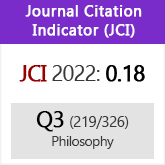Evaluating the innovations and their social diffusion
DOI:
https://doi.org/10.3989/isegoria.2013.048.09Keywords:
evaluation of innovation, diffusion of innovation, Oslo Manual, innovation studies, innovation and values, hidden innovationAbstract
Although innovations tend to be only assessed from an economic point of view, they provide other forms of value (social, cultural, political, environmental, moral). The phase of social diffusion of innovations is decisive for a plural and integrated evaluation of the processes of innovation. The Oslo Manual, by identifying diffusion with marketing, has generated new forms of hidden innovation, which can not be analyzed by the usual instruments of analysis in innovation studies. In conclusion, a methodological change it’s proposed, allowing to evaluate the various phases of a process of innovation and to account for the different agents involved in it.
Downloads
References
ΩAgazzi, E. (2004), Right, Wrong and Science. The Ethical Dimension of the Techno-Scientific Enterprise, Amsterdam & New York, Rodopi.
Aho, E. et alia (2006), Report of the Independent Expert Group on R+D and Innovation, Luxembourg, European Commission EUR 22005.
Bakhshi, H. y D. Throsby, 2010, The Culture of Innovation, An Economic Analysis of Innovation in Arts and Cultural Organizations, Londres, National Endowment for Science, Technology and Arts (NESTA).
Greenhalgh, T. et alia (2004), «Diffusion of Innovations in Service Organisations: Systematic Review and Recommendations», Milbank Quarterly, 82, 581–629. http://dx.doi.org/10.1111/j.0887-378X.2004.00325.x PMid:15595944 PMCid:PMC2690184
Greenhalgh, T. et alia (2005), «Storylines of Research in Diffusion of Innovation: A Meta-Narrative Approach to Systematic Review», Social Science and Medicine, 61, 417–430. http://dx.doi.org/10.1016/j.socscimed.2004.12.001 PMid:15893056
Gurrutxaga, A. y Echeverría, J. (2012), La luz de la luciérnaga, diálogos de innovación social, Madrid, Plaza y Valdés.
Hall, B. (2005), «Innovation and Diffusion», en J. Faberberg, D. Mowery y R.R. Nelson (eds.), The Oxford Handbook of Innovation, Oxford Univ. Press, Oxford.
Harris, M. y D. Albury (2009), The Innovation Imperative. Why Radical Innovation is Needed to Reinvent Public Services for the Recession and Beyond, Londres, National Endowment for Science, Technology and Arts (NESTA).
Johannessen, J.A., B. Olsen y G.T. Lumpkin, «Innovation as newness: what is new, how new, and new to whom?», European Journal of Innovation Management, 4:1 (2001), pp. 20-31. http://dx.doi.org/10.1108/14601060110365547
Murray, C. E. (2009), «Diffusion of Innovation Theory», Journal of Counseling and Development, 87, 108-116. http://dx.doi.org/10.1002/j.1556-6678.2009.tb00556.x
NESTA (2007), Hidden Innovation, London, National Endowment for Science, Technology and Arts (NESTA). OECD y Eurostat (2005), Manual de Oslo. Guía para la recogida e interpretación de datos sobre innovación, Paris, 3ª ed., OECD/Eurostat.
Oldenbourg, B. y K. Glanz (2008), Diffusion of Innovations, en K. Glanz et alia, Health Behavior and Health Education, San Francisco, John Wiley 2008, pp. 313-333.
Rogers, Everett M. (1962). Diffusion of Innovations. Glencoe: Free Press.
Rogers, Everett M. (1983). Diffusion of Innovations. New York: Free Press.
Schumpeter, J. (1939), Business Cycles, New York, McGraw Hill.
Strang, D. and Soule, S. (1998), «Diffusion in Organizations and Social Movements: From Hybrid Corn to Poison Pills», Annual Review of Sociology, 24, 265–290. http://dx.doi.org/10.1146/annurev.soc.24.1.265
Von Hippel, E. (2005), Democratizing Innovation, Cambridge, MIT Press.
Wejnert, B. (2002), «Integrating Models of Diffusion of Innovations: A Conceptual Framework», Annual Review of Sociology, 28, 297–326. http://dx.doi.org/10.1146/annurev.soc.28.110601.141051
Downloads
Published
How to Cite
Issue
Section
License
Copyright (c) 2013 Consejo Superior de Investigaciones Científicas (CSIC)

This work is licensed under a Creative Commons Attribution 4.0 International License.
© CSIC. Manuscripts published in both the printed and online versions of this Journal are the property of Consejo Superior de Investigaciones Científicas, and quoting this source is a requirement for any partial or full reproduction.All contents of this electronic edition, except where otherwise noted, are distributed under a “Creative Commons Attribution 4.0 International” (CC BY 4.0) License. You may read here the basic information and the legal text of the license. The indication of the CC BY 4.0 License must be expressly stated in this way when necessary.
Self-archiving in repositories, personal webpages or similar, of any version other than the published by the Editor, is not allowed.














